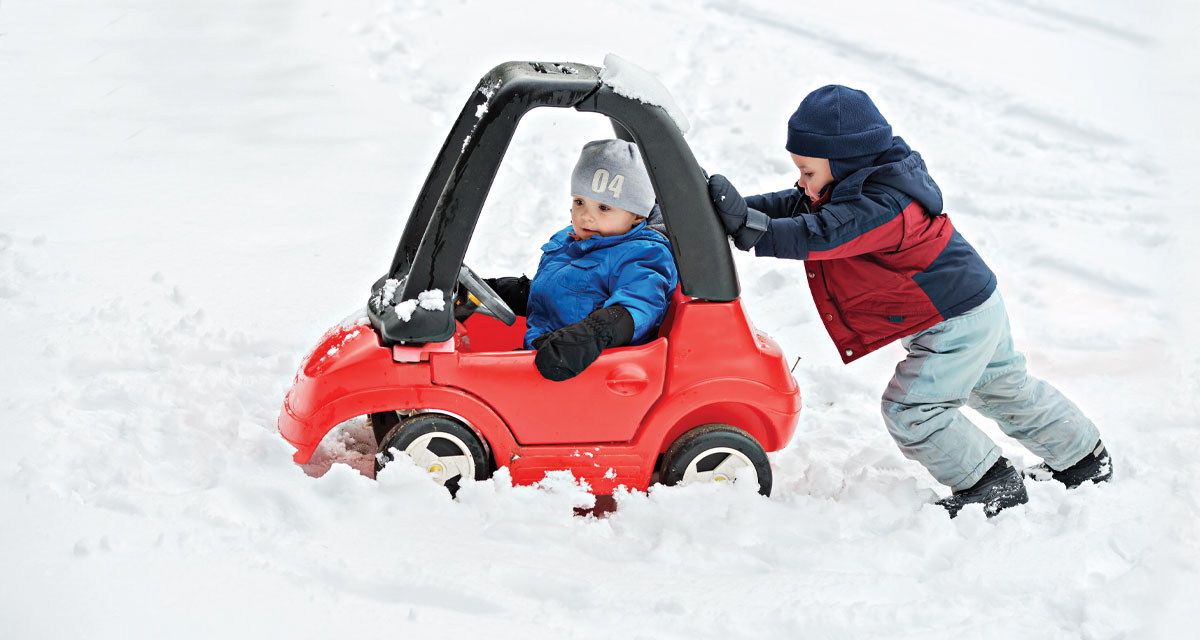Each month this series will provide important facts and tips surrounding child safety, in an effort to support parents and caregivers as they navigate reducing risks and creating the safest environment possible for the children in their lives.
Whether enjoying the cold weather outdoors or admiring the icy chill while staying warm inside, the winter months create a season of memory making. To keep the winter magical for children, it’s important to be aware and prepared for safety concerns due to severe storms and extreme temperatures. Read along for valuable tips to ensure a safe and healthy winter season.
Understanding Common Winter Injuries
Hypothermia
According to the Mayo Clinic, “Hypothermia is a medical emergency that occurs when your body loses heat faster than it can produce heat, causing a dangerously low body temperature.” While a human’s body temperature is considered normal at 98.6° F, when it succumbs to Hypothermia the temperature drops below 95° F. Children are at highest risk for Hypothermia by prolonged exposure to extreme cold weather, as well as being immersed in cold water, which can cause irreversible damage to the heart and respiratory system, and in extreme cases, death.
Early Signs of Hypothermia to look out for:
- Low energy levels
- Cold and flushed red skin
- Inability or lack of desire to eat or drink
- Difficulty breathing
Frostbite
Unfortunately, frostbite can affect children more often than adults, due to their tendency to lose heat from their body faster. Frostbite does not always cause permanent damage, but can still be severe, damaging the skin and underlying tissue after exposed body parts have been in freezing temperatures too long. Typically, children who experience frostbite show symptoms, such as freezing, prickling feelings in their appendages as well as numbness, discoloration and possible inflammation. There are three stages to be aware of to help determine the severity of a child’s injury; frostnip, superficial frostbite and deep frostbite.
Early signs of frostbite to look out for:
- Fingers, toes, or other skin areas looking paler than normal
- Child complaining of burning, tingling, or painful extremities
- Blisters within 24 hours of extreme weather exposure
Vehicle Collisions
Winter months are known for creating icy and snowy roads that can lead to slippery, dangerous road conditions. Avoid driving, especially with children, when adverse weather conditions are known in advance, even when it means postponing travel or holiday plans. The American Academy of Pediatrics (AAP) urges families to buckle up young children in a car seat in the back seat, following guidelines for their child’s height and weight requirements per their car seat model and manufacturer. It’s also important to remember that once your child is in their car seat, they should not be bundled up in thick layers, such as with snowsuits, puffer jackets and vests or any bulky winter coats that prevent the harness from fitting tightly against the body of the child. You can use a blanket to lay on top of your youngest passengers to keep them warm, as well as layers like those provided by mittens and hats.
Prevention and Preparedness
While many parents and caregivers think about extreme winter weather conditions being unsuitable for outdoor play or travel with children, they don’t realize the risk a regular winter day can pose for a child. Being educated on winter safety and setting boundaries with children regarding time spent outdoors can help keep them protected.
Here are 10 simple steps to take to help avoid winter injuries from occurring:
- Limit time spent outdoors in cold weather months;
- Always dress in warm layers and choose weather-proof clothing;
- Keep sensitive areas covered, such as hands, feet, and ears;
- When water or snow is concerned, keep skin dry;
- Have children take indoor breaks between time spent playing;
- Always have a buddy system to keep kids from being alone outside in winter;
- Never bundle your child when buckling them into their car seat;
- Avoid after-market winter car seat “solutions” that haven’t been crash-tested;
- Always have extra clean, dry clothing such as hat, socks, mittens, and layers for kids;
- Check winter weather forecasts and advisories often for updates before traveling.
Taking Action If Injury or Accidents Occur
Always have a First Aid kit easily accessible, as well as any important documents, such as lists of medications your child is currently taking and phone numbers with contact information for pediatricians and emergency contacts. If you are unsure about the severity or care of an injury but have concern, don’t wait to head to your nearest emergency room or call 911.
Helpful Resources to Learn More
- American Academy of Pediatrics (AAP)- {ONLINE ARTICLE HYPERLINK: https://www.aap.org/}
- Institute of Childhood Preparedness {ONLINE ARTICLE HYPERLINK: https://www.childhoodpreparedness.org/ }



















